Links can significantly impact your search performance — for better or worse.
Regardless of whether you choose to use black hat or white hat link building techniques, you should be prepared for the potential consequences.
It’s important to run a full backlink analysis and pinpoint both the good and bad links that are pointing to your site.
You know that good links will impact your search performance in a positive way, while the bad ones can potentially harm your site.
You want to avoid Google penalties as much as possible, especially now that Google is so concerned about user intent, as opposed to the keyword phrases they search for.
In the past, you could get away with any kind of links. Google frowned at bad links from the beginning, but they didn’t have a system for fishing out culprits. It’s a different ball game now.
The Panda update redefined content quality. The Penguin update made it clear that Google prefers earned links over built links.
Keep in mind that backlinks are important to your page’s rank or position in SERPs.
After reading this article, you’ll know how to get the right links — the links that’ll improve your search rankings. Let’s get started.
What is Backlink Analysis?
If you care at all about SEO, it’s vital to run a backlink analysis of the sites you’d like to get links from.
This kind of analysis is a detailed examination of the structure of links, both external and internal.
Good links will improve your search rankings and drive targeted organic traffic to your site, while bad links will get you into trouble.
So it’s important to conduct an extensive backlink analysis first before you begin building or earning links. Domain authority and the strength of external links are important parts of the search ranking algorithm.
Don’t just throw your web page links anywhere you like. Instead, take a more strategic approach.
Backlink Analysis Tools
When you begin to analyze backlinks, you’ve got to be careful which tools you use. There are many out there, both good and not so good.
The purpose of any backlink analysis tool is to show you the keywords, links and authority of sites you intend to link from.
Let’s consider a few of the more popular backlink analysis tools:
1). Ahrefs: This is one of my favorite backlink analytical tools. Ahrefs helps you check backlinks, keywords and brand mentions, so you can pinpoint exactly what your competitors are doing.
This is particularly important when you’re conducting a competitor analysis. After all, if your competitors’ web pages are ranking higher than yours, there must be something they’re doing that you’re not.
Ideally, you should use the Ahrefs Site Explorer to dig into any site you’d like to get good links from.
i). Go ahead and click the “Site Explorer” tab. Then input the site URL (e.g., bloggingwizard.com) into the search box. Click the orange “search” button:
ii). Analyze the link profile. Study the results carefully and decide whether your intended link will be good or bad based on the analysis:
Next, check the anchor texts to determine whether the site is over-optimized or safe for getting good links.
Note: If you find a lot of exact match keywords as anchor texts, it’s a sign that sooner or later the site may undergo a manual penalty. So look for sites that have a good mix, including branded anchor texts. (e.g., https://problogging.net).
2). SEMrush: This backlink analysis tool is a good choice when you want to deploy a broad SEO and content marketing campaign.
With the SEMrush tool, you can check organic keywords and paid ads keywords that your competitors are targeting. This will also show you similar sites in your niche that you can target for good links.
Here’s how to use SEMrush:
i). Go to SEMrush homepage. Input your competitor (or any site) URL you want to check for its link profile, then click the “SEARCH” button:
ii). Analyze the organic traffic data and total backlinks:
Finally, check the branded vs. non-branded keywords and look at the competitors’ sites for additional sources to get relevant authority links.
What Makes a Link Good?
More than likely, you’ve been advised to “only” get good links.
SEO experts will show you how important good links are and why you need them. But, not much has been said about what makes a link good.
You can’t ignore link building, because the number of backlinks remains immensely important in organic rankings.
It’s not possible to give a single, all-encompassing definition of a good link, because there are several factors to consider. In the same vein, a bad link isn’t just a link from a low-quality or banned web page — there’s more to it.
However, a good general principle to keep in mind is that the harder it is to get a backlink, the more value it will likely have.
That’s because good links aren’t easy to get.
Imagine how much it would cost you to get an authority link from Business Insider, CNN or the White House. That single backlink would definitely boost your search rankings, but how on earth would you get it?
In the same vein, the easier it is to get a backlink, the lesser value it will probably have. This is a fact. It’s easy to get a link from forums, because all you need do is reply to a thread, and, if the rooms aren’t strictly moderated, your link will stay up.
So let’s consider a few factors that make a link good. We can use these metrics to figure out which links are worth our time:
Good backlinks come from web pages that are relevant to your page’s topic: The first metric that you can use to determine a good link is the page’s relevance, compared to your page’s topic.
Brian Clark, the founder of Copyblogger, a content marketing site, was recently interviewed at The Rise To The Top. The audiences of both blogs are closely related, so a link to Copyblogger was relevant.
Aside from improving your rankings, the source of your link can also affect conversions.
Even if your web page ranks highly in Google’s top 10, you could still struggle to convert search users into customers.
Relevant backlinks have been an important part of an optimized page for years now.
The word “relevant” means “closely connected or appropriate to the matter at hand.” In other words, if you earn a link from a web page that addresses a topic similar to the page that the link is pointing to, then it’s relevant.
Let’s say that you own a travel site and you’ve created a guide on “the best places to visit in Dubai.” You want to build links to this web page. Where do you begin?
You’ve got a lot of possibilities. But, if your links come from another travel site for that region of the world, that would be awesome, because they’re relevant to your guide. If it’s difficult to get such links, then aim for pages and sites that are at least relevant to “travel.”
So a link from CNN’s travel page is more relevant than one from a news article on Business Insider.
Before you build a link from any web page, ask yourself “will this audience benefit from my link?”
If you’re a social media expert and you built a link from an accounting software comparison site, will your audience benefit from that link? Possibly, but I doubt it.
I’ve built links from email marketing, startup business, social media, content marketing, link building, investing and franchising sites. In one way or another, my sites QuickSprout.com & NeilPatel.com are closely tied to those subjects.
Relevance will continue to be a future trend in search ranking factors.
Through personal experience, I’ve discovered that links from SEO, content marketing, and social media sites carry the most weight and impact my rankings.
Quick Tip: If you want to do guest blogging to build authority links, but there aren’t many blogs in your niche that accept guest posts, you can bridge the topic.
Let’s say you run a real estate site. You could still guest blog on internet marketing related blogs.
Simply bridge your topics and come up with compelling titles and case studies. You can write articles on these titles and submit to email marketing, social marketing, SEO, or CRO blogs:
- Case Study: How I Increased My Real Estate Blog’s Rankings by 97%
- How a Real Estate Expert Used Twitter Marketing to Drive Referral Traffic
- 7 Simple Methods I Used to Boost My Conversion Rate by 34%
Good backlinks come from trustworthy sites, not spam sites: Are your backlinks from trustworthy sites? Keep in mind that the TrustRank of referring web pages is very important.
According to many search experts, 70% of a site’s ability to get good search rankings is attributable to the sites that link to it.
However, not all links are created equal. A single link from Wikipedia, even though it’s a no-follow link, will weigh more than 3 – 5 do follow links from spammy sites with low authority or TrustRank.
The reason is simple: Wikipedia is a trustworthy site, not a spam site.
One of the reasons why people lose their rankings when Google throws out a big update is because their links are not trusted. Your web pages may be highly ranked for the moment, but will that last?
Google trusts some sites more than others. If Google doesn’t trust your site, negative SEO from unscrupulous people who build unnatural links to your site will affect your search performance.
Earning links from sites that have lots of seed sites linking to them will serve you well. Google would view those links as a sign that there must be something useful about your page. Otherwise, why would such trustworthy sites link back to it?
Links inside the content: Did you know that the location of a link on a page can affect the SEO value of it?
It’s true. For example, site-wide links — e.g., those in footers or sidebars — don’t carry much weight. But links inside the content (i.e., contextual links) are the best you can ever get.
It gets even better when the referring page is trustworthy and relevant. Google perceives contextual links from relevant sites as significantly valuable, and will reward you accordingly.
Contextual links may come in the form of external or internal links. Yes, you can use guest posting to drive your white hat SEO campaign, but be aware that links from guest posts — especially in an author bio or author profile area — may not be as valuable as a contextual link on the same page.
When you have the same anchor texts (especially if they’re over-optimized) on author bios on different blogs, it may also hurt your rankings because of duplicate content issues. You want links in author bios that are unique across different sites.
To be safe, aim for contextual links — i.e., links from within the content. Contextual links that point to your web page like the one below are good links, and will positively influence your search performance:
Google has evolved as a search engine company. Its recent algorithm changes are upgrades that provide better search results to users, based on context as well as the content.
When search engines crawl web pages, they identify links and consider the text around the link.
For example, if you linked to your page using “Apple iPhone,” the Googlebot wants to know how relevant the anchor link is to the context of the page.
Are there related words that indicate you were actually referring to the iPhone? You’d reasonably be expected to at least mention other related products, such as Apple’s iPad or iMac, or to talk about Steve Jobs and how his designs evolved.
All these are steps towards making your contextual links relevant. Just because the link appears inside the content, surrounded by words doesn’t mean it’s the right link. It could have been manipulated.
TechCrunch knows how to link out to authority sites in a natural way. If the post is about Facebook, it’ll naturally mention words related to that site.
In the example below, instead of just linking out to “Hidden Chats,” TechCrunch placed other related words in context (before and after the anchor) — “top messaging apps,” “million users,” etc. These words are relevant to online chatting.
Links that flow naturally with the content: When I first started out as a content writer, my major challenge was writing naturally. It requires creativity, experimentation and a willingness to learn and work hard.
A good link usually flows naturally with the surrounding content. If there’s a sense of obstruction in the flow of the text before or after a link, that link could be perceived as spammy. See how this anchor text reads naturally:
Take a look at the paragraph below, tell me: does the link flow smoothly into the content?
This link and its context are too promotional. It doesn’t provide any value. Instead, it just sings the praises of the lead generation service. This kind of spammy link could get you into trouble.
As much as you can, use anchor texts that are natural. You may just focus on creating your content, then come back later to hyperlink a phrase that’s most suitable to your web page.
Remember that having a certain percentage of nofollow links may also indicate a natural attempt to only reference relevant web pages. So don’t shy away from nofollow links.
Links from long-form content are worth more: It’s no longer a question: long-form content drives organic traffic and tends to rank higher than shorter articles.
SerpIQ found that the top-ranked articles on the first page of Google’s results contain an average of 2,450 words.
In fact, Medium, a long-form content platform, recently compiled data on the most successful articles the site has ever published.
They measured the average time on page, in relation to the amount of time required to finish the article and the post length. They found that the average post takes 7 minutes to read and contains about 1,600 words.
Now, it’s true that Google hasn’t come right out and said that links from long-form content are valued more than links from shorter pieces. But the reality is this: users prefer long-form content.
And Googlebot follows people. The whole essence of SEO is this: give users what they want and Google will reward you.
If you get a link from long-form content, it’ll pass stronger juice and improve your rankings, compared to a 300-word article that doesn’t provide much value.
Naturally, longer content can dig deeper into a topic, addressing every part and is likely preferred to “powerful” short articles.
Unless you’re Seth Godin, people won’t click on your links if the web page doesn’t resonate with them.
Seth’s blog posts may be short (sometimes less than 100 words), but his bestselling books are in-depth, rich, and thought-provoking. His classic All Marketers Are Liars has 240 pages.
Want to take a guess at how many authority web pages I link out to in my posts on average? Over 40 – all of them relevant and useful. Do people click those links? Sure they do, especially when they links appear natural.
So, focus on getting links from long-form content. When you write guest posts, go the extra mile to create longer pieces and then creatively position your anchor link inside the content (contextual link).
Dofollow and nofollow links combined: Make all your links dofollow, because they’ll improve your search rankings, right?
Wrong.
You also need some nofollow links in order to make the links look natural, authoritative and relevant.
There’s been a lot of disagreement on this point.
Here’s Google’s official statement on nofollow links:
In general, we don’t follow them.
Matt Cutts said that too many dofollow links from unrelated sites can harm your rankings, but too many nofollow links will not. The attribute rel=”nofollow” is usually contained in the link tag itself.
Invest in both types of links, but more on dofollow if you want improved rankings. Here’s a typical example from Neila Walker:
You should look at the hidden power of nofollow links, which can create awareness of your product, drive targeted traffic, engage the user, and get you the customer.
So it’s worth it to invest in nofollow links.
You can always get dofollow links through guest blogging. But, if you have the opportunity to get a link from CNN.com – even if it’s nofollow – grab it with both hands.
As it stands now, Google hasn’t stipulated a ratio for both dofollow and nofollow links.
To play it safe, acquire both types of links, because dofollow may improve search performance, but nofollow (especially from authority sites) will get you the traffic, sales and higher click-through rate.
Links from sites with high domain authority: Obviously, if you get a link from a site with high domain authority, then – assuming that the link is relevant to the hosting page and referring page – it’ll be counted as a good link.
Use Link Explorer to check the domain authority of a page. Just input the site URL into the search box and click the search button on the right.
Next, you’ll see the domain and page authority:
What Makes a Link Bad?
A good link follows Google’s guidelines. A bad link does not.
A bad link is simply one that violates Google’s guidelines. Consequently, it can lead to Google penalties. You should look out for signals when building links, no matter where the links are coming from.
Link farms, paid links, link wheels and other black hat link-building techniques can get you into trouble. Avoid them at all costs.
Most SEOs make the mistake of dropping their links everywhere. They don’t care how this can affect search performance, but you should.
Even though you don’t have 100% control over your links, the ones you can control (for instance, when you contribute to other blogs) should be good links. Steer clear of bad links; the consequences are often too negative to overcome.
Here are ways you can recognize bad links:
Global links to your site: When it comes to link building, “you’re known by the company you keep.” If you get a link from a page that also linked out to a lot of spammy pages, what’s likely to happen?
You’ll recognize this when you see every page on a site has dofollow links to a specific web page, e.g., “travel booking page.” Search engines see these links as suspicious. In turn, this can attract a manual penalty.
Why would hundreds of over-optimized links come from a single root domain?
Something manipulative may be happening there.
Links that point to products that Google sees as spammy — products like payday loans, weight loss pills, etc. — with over-optimized anchors are bad links, especially when the links are coming from unrelated pages.
Links coming from unrelated sites or pages: I mentioned this earlier. If your links are coming from unrelated sites or pages, they’ll be regarded as bad links.
If you’re an internet marketing expert, don’t try to get links from fitness blogs, because they’re not related.
However, if you’re interviewed by a fitness expert, you should use your brand name as anchor text. That’s because the anchor text of external links to the page affects how Google will perceive your link.
So, for example, instead of using “digital marketing company” as the anchor text, use “www.digitalmarketingservice.com” and link to your homepage.
3. Dofollow site-wide and footer links: When you’ve got unrelated links to an external site, Google may slap a manual penalty on your site.
Let’s be clear on this: Matt Cutts said in a YouTube video that sitewide links may not be bad, because, from the algorithmic standpoint, Google will count hundreds of sitewide links as a single link, since they’re from the same domain name.
In his words, “sitewide links do happen.” It makes sense since most sites have static pages for things like a privacy policy, copyright notices, etc.
But when Google finds offtopic site-wide and footer links, that may raise red flags. In its basic form, it just looks manipulative.
For example, if the purpose of your site is to deliver “biology lessons,” it’d be off-topic to link out to a forex trading site in your footer or sidebar.
The website linking to you has a low domain authority: Domain authority is a website metric developed by Moz. It’s a pretty popular SEO term, which has a decent search volume:
I think the reason why SEO experts, site owners and Google itself trust domain authority comes down to these three factors:
Domain authority has become a strong website metric. If you get a link from a low DA site, it may be counted as a bad link, no matter how relevant it is.
In the rankings correlation, domain authority has the highest impact. In fact, it weighs more than the number of links pointing to the web page.
Bottom line: Get links from a domain with at least 30% authority. Links from sites with lower scores may be counted as bad.
Links from article directories: Article directories used to be very popular, up until around three years ago.
Mitchell Wright shared the 7 reasons why links from article directories can hurt your site.
Google frowns upon low-quality content. That’s why article directories aren’t right for you. They’re known as content mills with little or no value in their content.
Quantity is more important to these directories than quality. But quality is what grows blogs, boosts organic search rankings and draws prospects to your content. For smart marketers, quantity is achieved through consistency.
Google, through Matt Cutts, said
You should not submit articles to large content repositories such as ezine.com, ezinearticles.com, articlecity.com, etc.
More than likely, a link from an article directory will be unnatural. Google is well aware that authors use these directories for different purposes and could repurpose the same content on 10 or more article directories.
Backlinks with over-optimized anchor texts: Plain and simple: over-optimized anchor texts can negatively affect your search traffic and rankings.
Links coming from over-optimized anchors are dangerous. The percentage of exact match anchor texts that resulted in a Penguin penalty was higher than that of other anchor texts.
In the past, over-optimization was the way site owners and SEOs improved rankings. But it definitely doesn’t work that way anymore. Any manipulative means of getting links is SEO suicide.
Back in April 2012, Google launched the over-optimization penalty. It completely de-indexed sites that had excessive anchor text stuffing, link spamming and other bad SEO practices.
To achieve better links and stay off Google’s Penguin radar, you need to distribute your anchor texts between exact match, phrase, brand name, keyword branded, etc.
To be honest with you, I don’t really care about anchor texts. When I write my posts, I just make sure each sentence flows well and makes sense. If the anchor text I’ve written flows smoothly with the rest of the post, then I keep it. If not, I rewrite it.
Trying to keep up with all the anchor text rules may not be an outright waste of time, but it’ll only take you so far. You want results, not rules.
So focus on creating the right content and let the anchors fall in as natural as possible. Just like this link, I got from Entrepreneur.com:
On my Wikipedia profile page, my sites are linked using branded anchor texts. Considering that some of my posts were referenced as well, it makes sense to leverage brand names that redirect to the homepages.
A link from a low-quality or thin content page: Links from thin content and low-quality content will likely not be good. Google discovered pages with thin content to be:
- Automatically generated content
- Thin affiliate pages
- Low-quality guest posts
- Scraped content
These pages don’t provide users with substance. There’s no real value here — no take-home tips or advice. Creating thin content is easy. After all, little or no creative work is required.
I’m sure you’ve seen low-quality content before. Such pieces don’t help users in any way, so users don’t engage with them. Scraped content like this drives the user away from your site and to your competitors.
In a nutshell, a link from a thin content or from a low-quality page is a bad link. Instead, embrace long-form content, create in-depth guides and watch your conversions and your search rankings improve dramatically.
A link from a penalized site: This is obvious. If you get a link from a penalized site, it’s a bad link.
Penalized sites are not indexed by Google. So your links will be wasted and could even affect your rankings in the long run.
You can check if a site is still indexable or active with this search string: site:thesiteurl.com:
Steer clear of those blogs.
Each year, Google changes its search algorithm around 500 times. No doubt, new sites are going to be penalized — and some formerly penalized sites will recover their good standing.
There are several tools you can use to check the status of a site you’d like to get a link from. I prefer Ismywebsitepenalized.com.
On the homepage, input the site URL that you intend to get links from – for example, through guest blogging, link building, email outreach, etc. Then, click the button to check:
Next, see the status of the site:
Conclusion
It’s important to note that the future of SEO, link building and content marketing is user optimization.
The audience that you’re targeting has to benefit from your content, keywords and links if you ever want Google to reward you.
In some ways, Google is like a toddler that needs to be spoon-fed. All you’ve got to do is lead Googlebot by the hand through in-depth and high-value content and you’ll prove that you deserve the first page rankings.
The more good links you have pointing to your web pages, the better and more authoritative Google will perceive your web pages to be. After all, good links only come to useful sites that users are interested in.
If you find that you’re not getting organic traffic, regardless of the efforts you’re putting into content creation – making sure that you’re providing value – here’s what I advise you to do:
Reach out to authority and industry blogs. Get natural links from trustworthy sites. Most of all, be consistent and patient, and gradually you’ll climb to the top of Google search engine ranking pages (SERPs).
What other strategies do you use to determine good and bad links? What steps are you taking to build only good links?

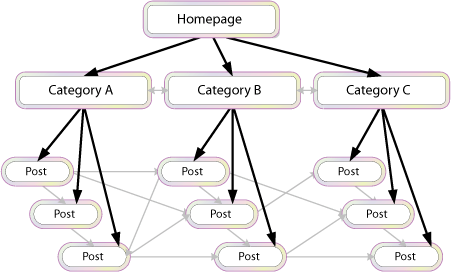
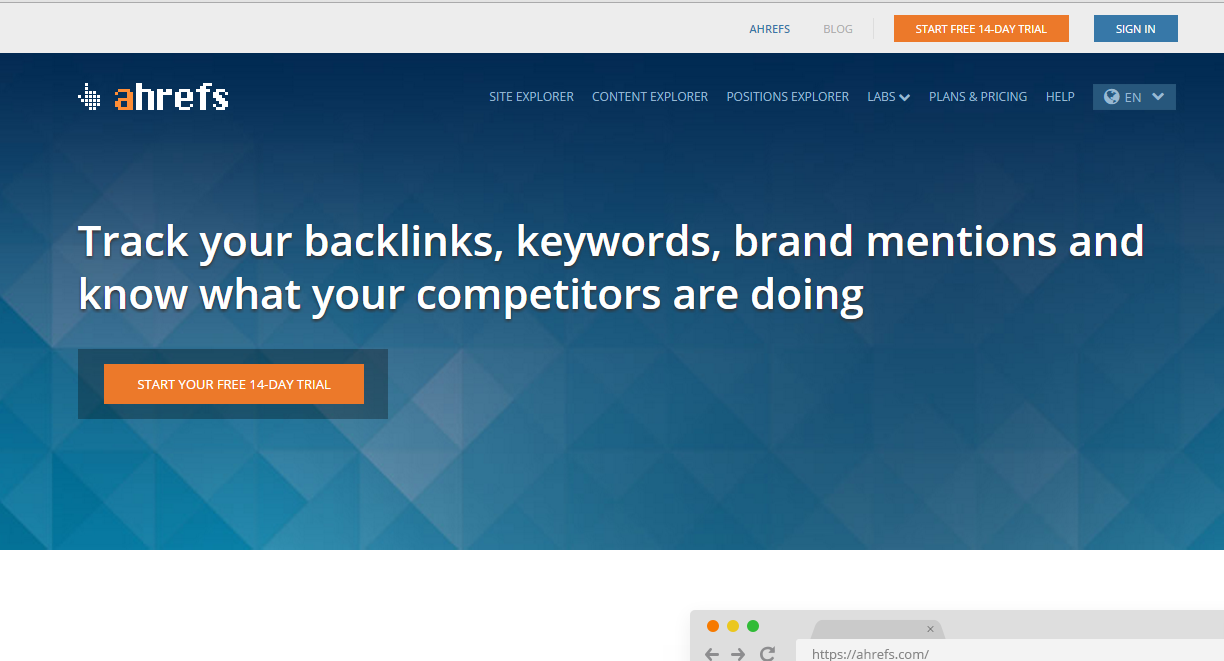

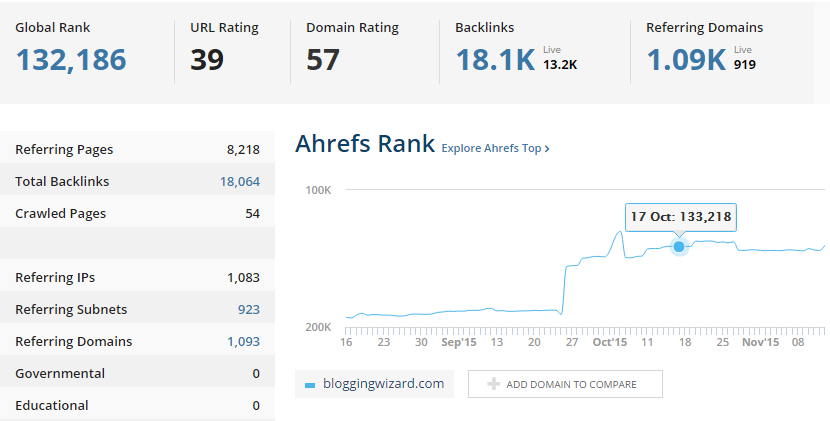

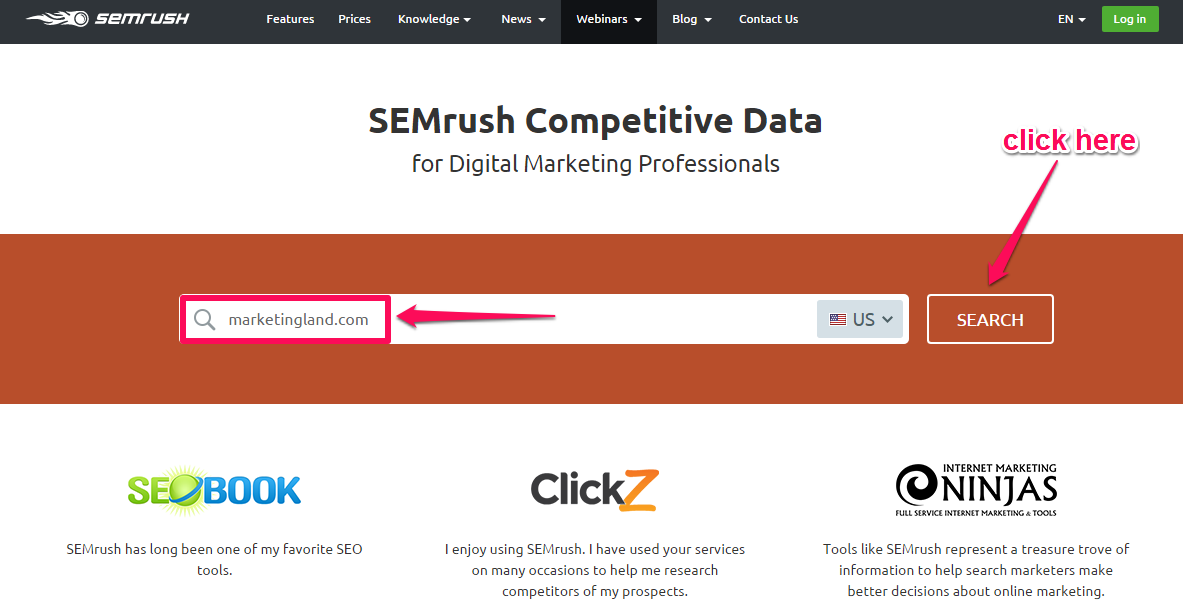
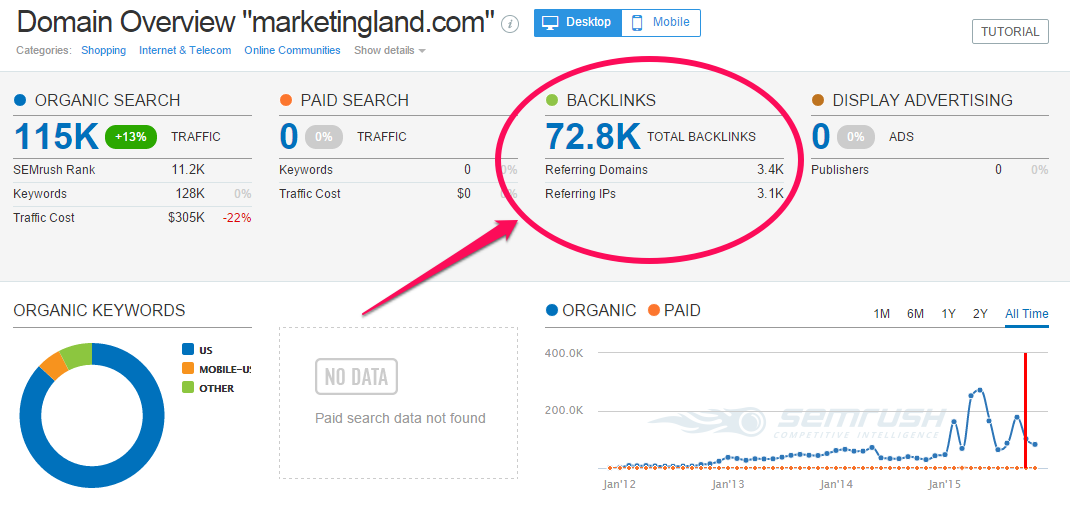
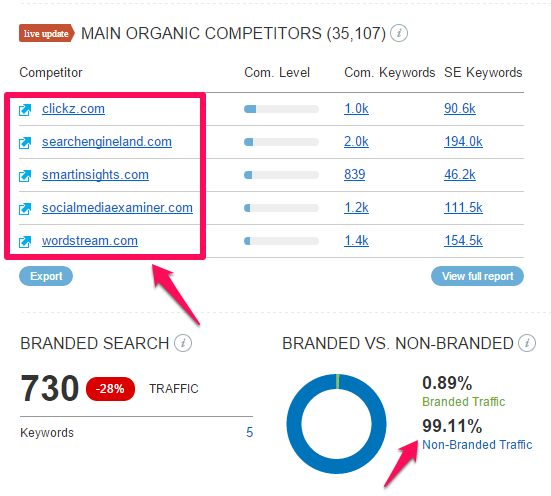
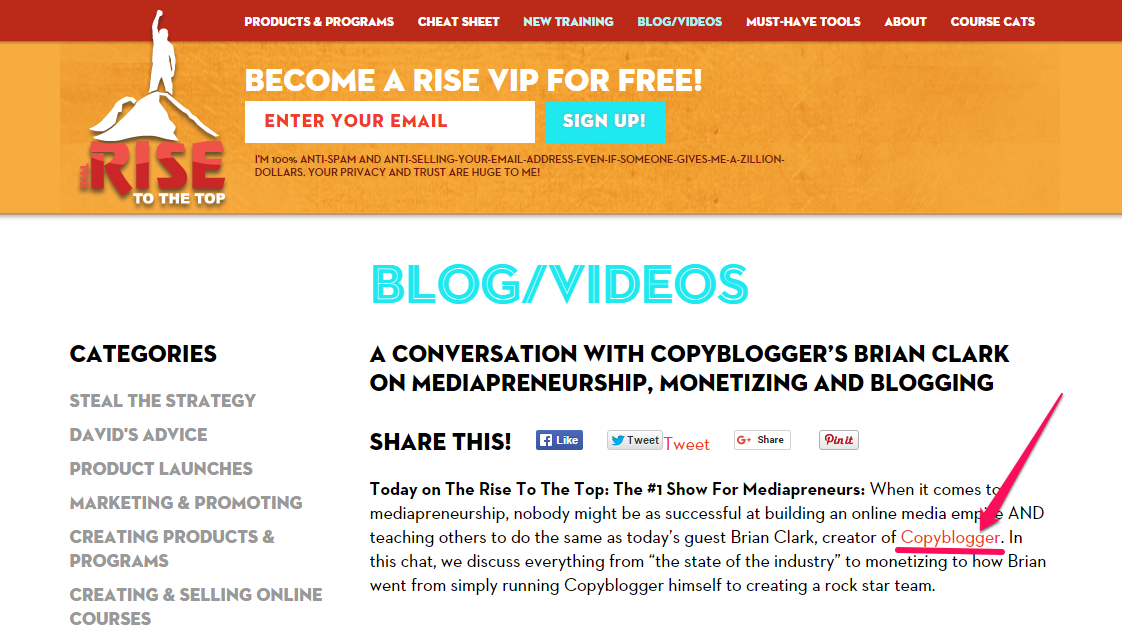
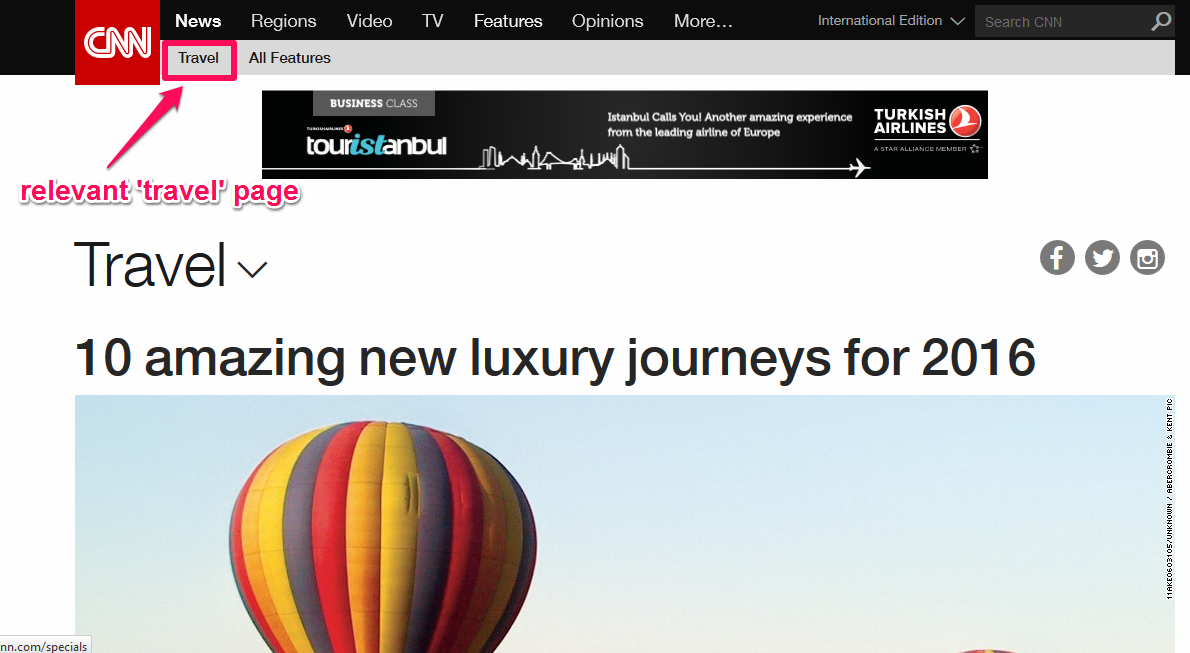


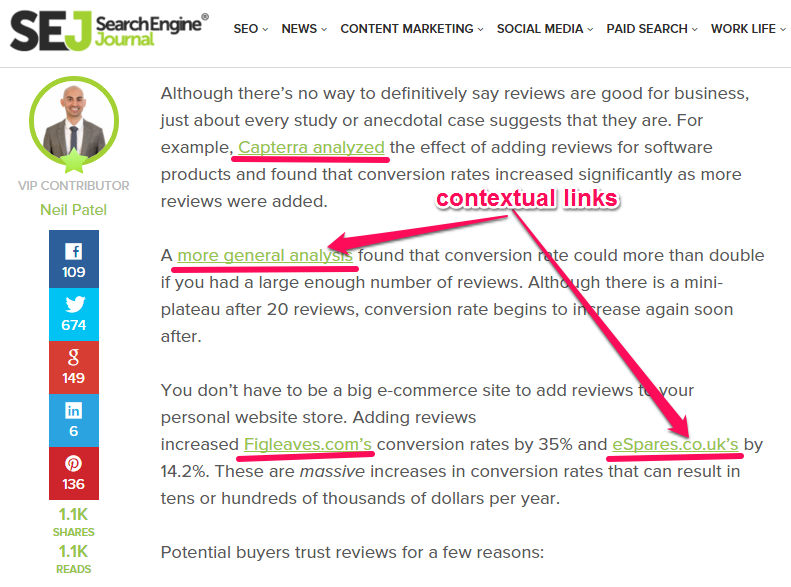
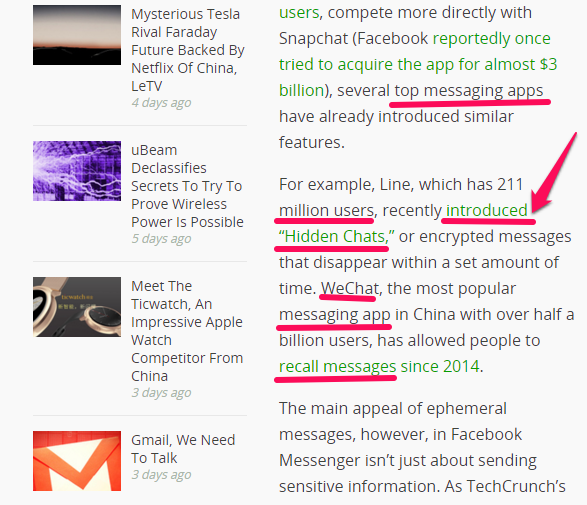




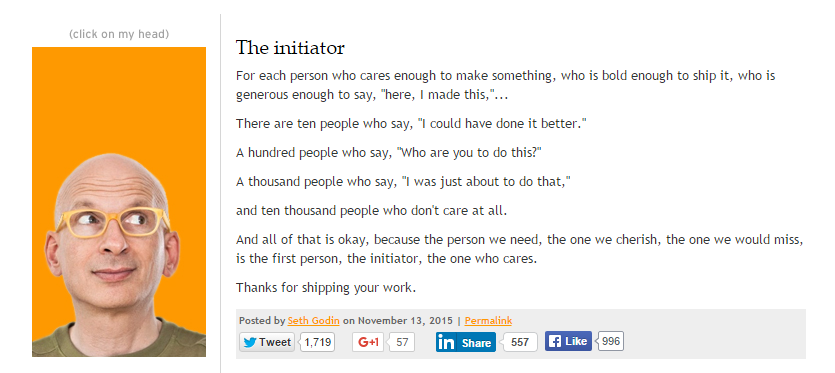
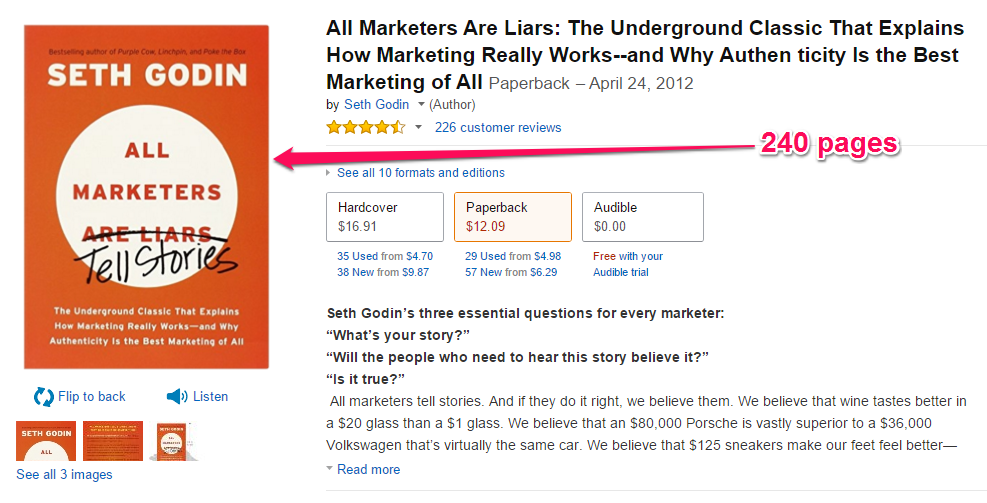
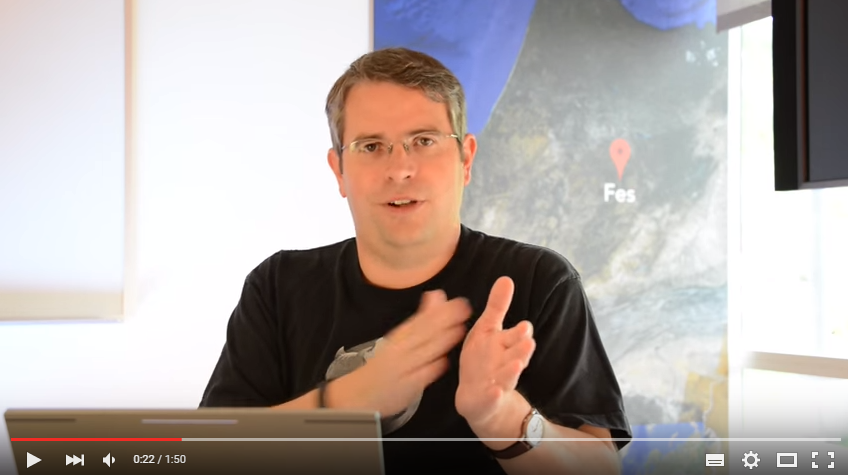





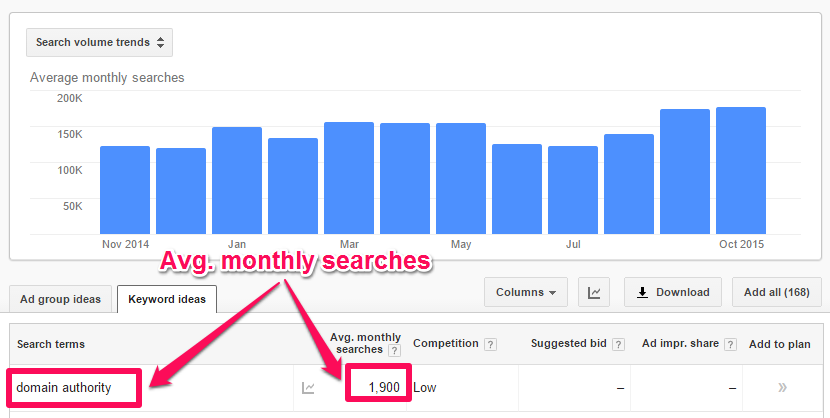

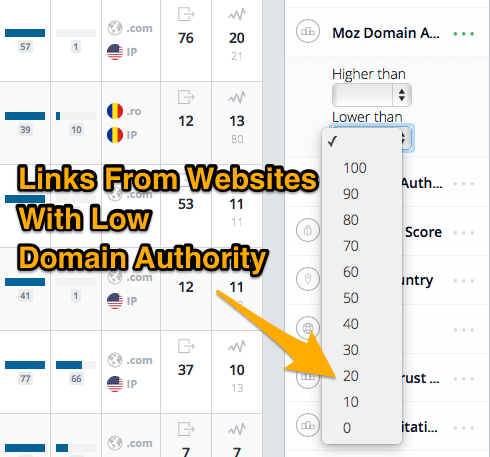

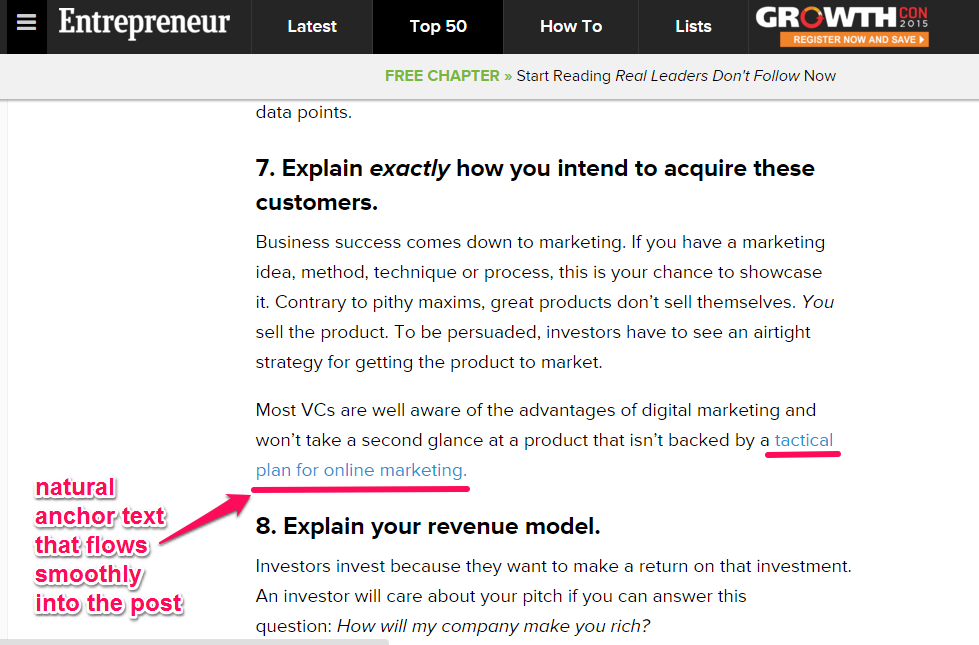
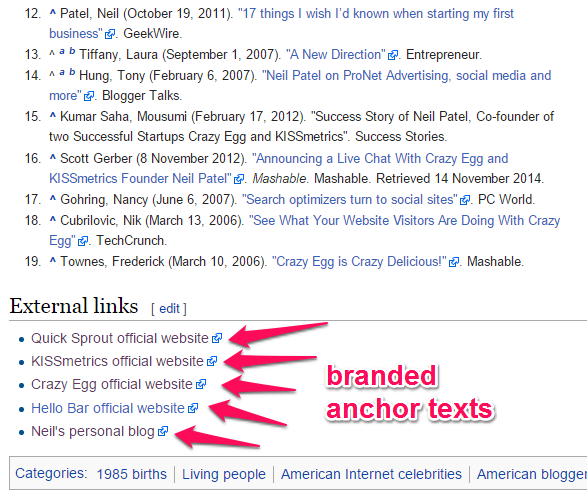
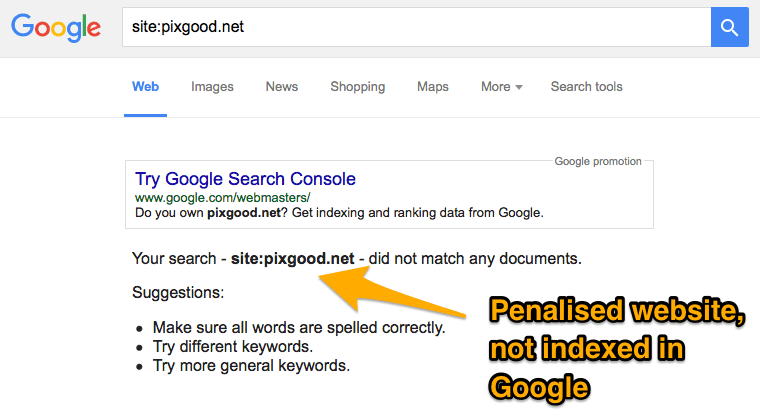


Comments (145)